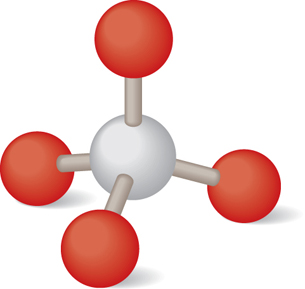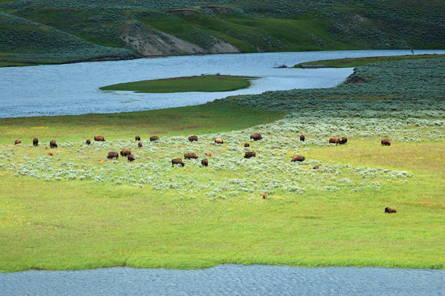Module 3
1. Module 3
1.21. Page 5
Module 3—Electrical Phenomena
 Reflect and Connect
Reflect and Connect

In the Get Focused section you were asked to consider the symmetry of a crystal within silica glass. In the ball-and-stick model that was presented, a red ball represented each oxygen atom. These atoms have a slight negative charge. The central white ball represents a silicon atom that has a slight positive charge.
 Try This
Try This
TR 2. Consider the electrostatic force exerted by the top-most oxygen atom on the central silicon atom. Identify the direction of this force.
TR 3. Consider the net electrostatic force exerted by the three oxygen atoms on the bottom of the central silicon atom. Use your knowledge of vectors to explain how it could be possible for the direction of this net force to be straight down, in the opposite direction of the force exerted by the oxygen atom on the top.
TR 4. Given your answers to the previous two questions, explain how, because of the four oxygen atoms, it could be possible for the net force acting on the silicon atom to be zero.
TR 5. Suppose someone attempted to apply Coulomb’s law to calculate the net force on the silicon atom due to all four oxygen atoms in this crystal. Would it be sufficient to work only with x and y components of the individual forces? Suggest a more successful approach.
TR 6. Each of the oxygen atoms in this crystal has a slight negative charge. Therefore, each oxygen atom experiences a net repelling force due to the presence of the other three oxygen atoms. Identify a force that could counter this net repelling force.
 Big Picture Reflection
Big Picture Reflection

© james steidl/iStockphoto
Take a few moments and think about your answers to the questions in the Reflect and Connect section. The fact that the oxygen atoms are negatively charged and the central silicon atom is positively charged means that electrostatic forces apply to this situation. However, the net electrostatic force on each atom is zero. In other words, the forces are in a state of equilibrium. The angles and distances between the atoms simply describe the overall state of this system when the forces are balanced.
Given the central role played by the electrostatic force, it is not a stretch to say that the shape of this crystal is a direct consequence of Coulomb’s law. The same thinking could apply to almost any crystal. Keep this in mind the next time you look at a snowflake.
 Going Beyond
Going Beyond

© Jhaz Photography/shutterstock
Other Effects of Lightning on the Environment
In this lesson you learned about some of the effects of lightning striking the ground. The silica in sand can be turned into glass because the temperature inside a single lightning bolt can exceed 30 000°C—that’s five times hotter than the surface of the sun!

© 2008 Jupiterimages Corporation
These high temperatures explain why lightning strikes are often a source of wildfires. In both the boreal forest ecosystem and the prairie grassland ecosystem, a fire started by lightning can have a rejuvenating effect since fires started by lightning strikes burn away dead and overcrowded trees, clearing the way for new growth; the combustion reaction also releases nutrients into the soil to nourish the next generation of the forest, leading to a healthy diversity in both the plant and animal communities.
Using Lightning as a Technology

© Mark R/shutterstock
First Nations people have lived in Alberta for thousands of years. They knew about the connections between the fires produced by lightning strikes and their beneficial long-term effects on the ecosystem. Where lightning caused a fire, there would be exceptionally lush vegetation in following years, which would attract animals such as bison, drawn to feed on the vegetation. Clearly, lightning was a natural phenomenon that was to be respected for both its destructive and beneficial effects.
 Self-Check
Self-Check
SC 8. The traditional ecological knowledge of the First Nations people developed through living in the environment for hundreds of generations. Part of this knowledge was informed by the natural cycle of forest rejuvenation of which fire is a part. Suggest a reason why this knowledge would be crucial to the survival of indigenous people in this environment.
 Self-Check Answers
Self-Check Answers
SC 8. First Nations people depended upon the resources found in the local environment to meet their basic needs: food, clothing, and shelter. It was critical to be able to predict where the best locations would be for the growth of plant material that would attract game. Knowing that an area struck by lightning could be bountiful in following years could improve the ability of people to survive in that area.
 Module 3: Lesson 3 Assignment
Module 3: Lesson 3 Assignment
Remember to submit your Module 3: Lesson 3 Assignment to your teacher for marks.